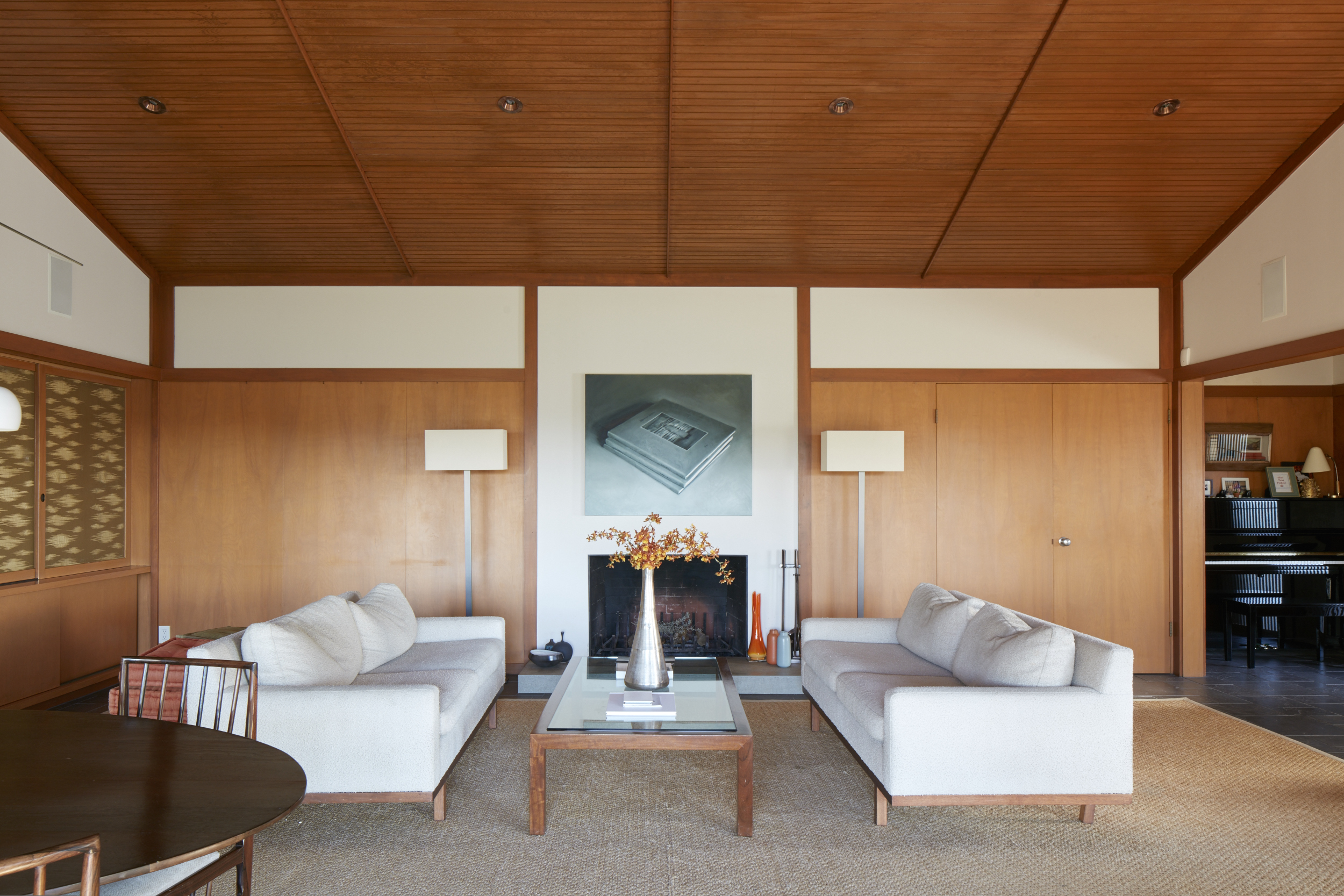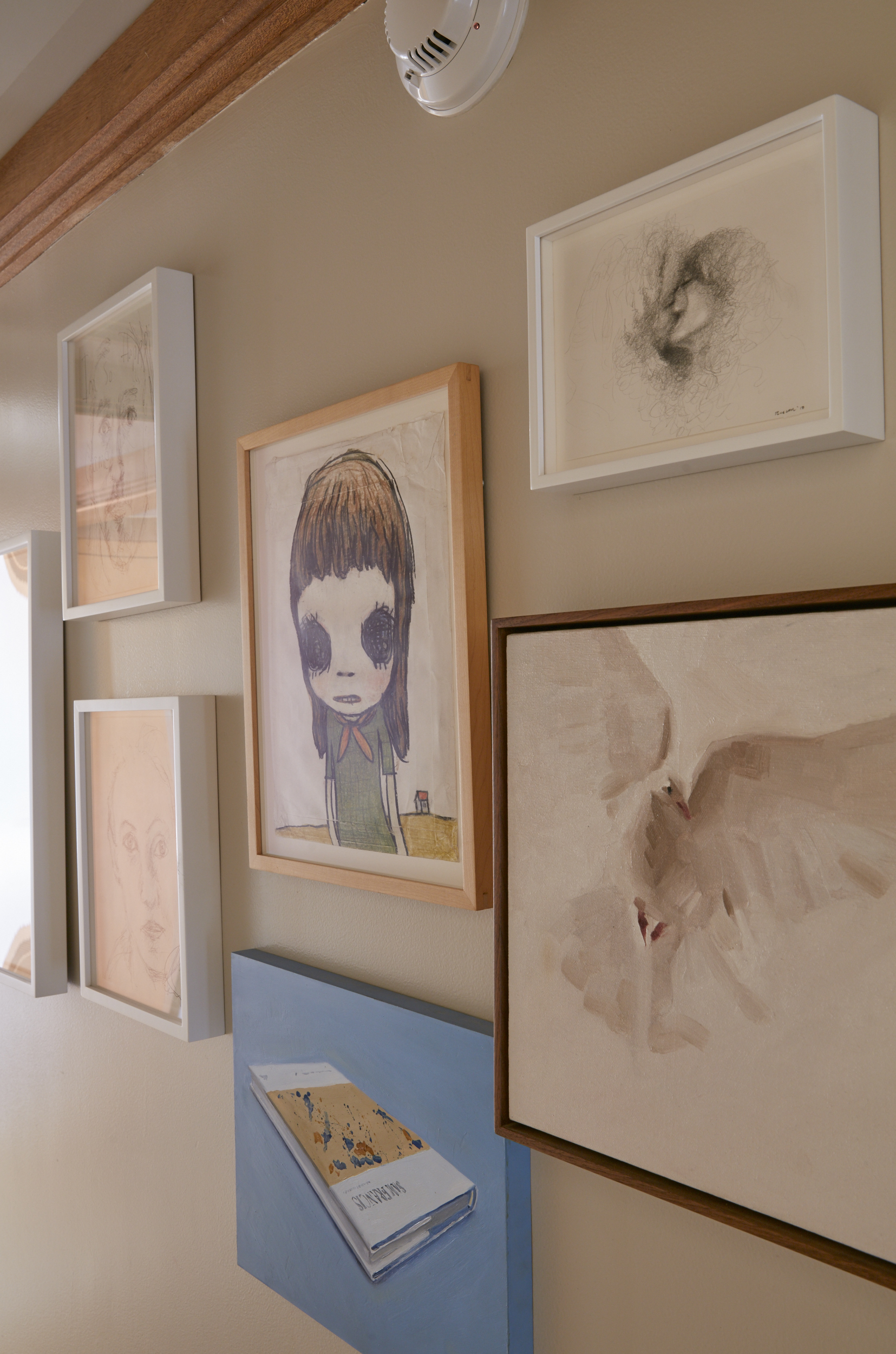A House by the Silver Lake
ctress Lisa Edelstein, celebrated for her impressive roles in film and notable TV shows like House and Girlfriends’ Guide to Divorce, resides in a beautiful Japanese mid-century home in Silver Lake with her husband, the talented artist Robert Russell.


The previous owners of the house were Glenn Lawson and Grant Fenning, who owned the Los Angeles showroom, Lawson Fenning. They were both Art Center students, and the general agreement was that the house would only be sold to Art Center students as a tribute to Edward Adams. Lisa, who is not an Arts Center student, is the only non-Arts Center student owner, but she says, “But I married an artist, so it should count.”
“When I moved in, everyone was attached to the house, but nobody had the money to do the necessary repair work,” recalls Lisa. She shored up the retaining wall at the bottom of the garden and with the help of specialist Robert Pressler, she pruned the juniper tree and lovingly restored the 100-year-old bonsai trees that had made the long trip with Adams from Japan in the 1940s.
Together with landscape designer Wade Graham, Lisa and Robert cleared the overgrown garden paths, removed two diseased pine trees, designed two ponds, and added David Cressey architectural pots. Lisa says, “Wade is not only incredibly talented, he is also inclusive and collaborative. Robert and I love to design and create, and we never want to feel left out of that process by hiring someone to do it for us. Wade is incredible to work with in that regard. He has a great talent for manifesting ideas, whether his alone or ours together.”


Lisa also made small renovations inside the house, re-paneling the den’s wood ceiling and designing new cabinets in the primary bathroom. All changes were crafted to be sympathetic to the curly maple dominating the house’s interior. The living room’s original tiles around the fireplace were black and ominous, so she painted them over in white.
While the exterior features Japanese influences, the interior is decidedly mid-century modern. Japanese influences are in the shoji screens in the primary bedroom and Lisa’s office. The original Japanese silk paneled wall cupboards border one wall of the living room with its cathedral ceiling, but most of the house is wood-paneled in curly maple, pausing only for a huddle of paintings along the hallway that runs across the length of the house.
Though the wood-paneled walls in the living room remain largely blank, the hallway is a splattering of color, with paintings from artist friends like Charles Gaines, Edgar Arcenaux, Carter Mull, and Henry Taylor. They sit alongside paintings and drawings that Robert and Lisa have made for each other. Some paintings are a trade, which Robert says is a benefit of having artist friends, as it allows each one to afford the other’s work. There is also a painting, a gift from Lisa’s friend, artist Kenny Scharf, given to her before she met Robert. It would also have been challenging to acquire the work on their living room wall, a rare artwork by Charles Gaines, if they were not already friends.


Like the house requirements, when Lisa met Robert, she also had a list of criteria for the man with whom she wanted to share her life. He had to be “a man who lived in Silver Lake, who was an artist – a Jewish, funny, sexy guy who was successful and who already had kids. And who would be willing to live in my house,” she laughs.
Lisa and Robert formed an immediate bond when they met. Even though they frequented the same places in Silver Lake, it took a serendipitous meeting at the Hammer Museum for them to get together. A fresh start and a renewed surge of creativity followed in both their lives. Robert, who had lived across the lake before he met Lisa, found equal comfort in their new home. Even though he met and married Lisa, he has an unerring sense of belonging after she bought the house.
As you enter through the front door, you’ll notice a small diorama on the right, which Robert inherited from his grandmother. It depicts an almost identical Japanese interior, with a picture of a water view and orange coloring, a trademark of the original Adams house. It’s an uncanny premonition that the diorama was made by his grandfather 40 years before Robert even stepped foot into this house.
“I wasn’t looking for a new house,” says Robert. “I was just divorced and finding my way. I had lived in Silver Lake for 20 years, and here was this amazing house I had never seen before. In a way, it was a metaphor for everything happening in my life. My world had become so small, and here was this expansive view, a new environment, literally on the other side of the hill from where I lived.”
Robert had renovated two houses before, and they found that they had similar sensibilities. Together, they designed the art studio where Robert now works on his paintings and a guest house by the pool. Lisa drew the concepts, and Robert rendered them in Photoshop.


Robert Russell is a renowned and cerebral artist, with some critics comparing his brushwork and astute sense of light to artists like Lucien Freud. His art projects are diverse and slightly whimsical. A recent series of paintings was a collection of people also named ‘Robert Russell’ all of whose pictures he found on Google. Another series is a collection of paintings of books about famous artists. His current project, entitled ‘Amateurs’ is about the proliferation of internet pornography and erotica.
The house is a refuge from the bustling activity of Silver Lake and Los Angeles in general. The tall pine trees and the shards of blue water in the reservoir glimpsed through the greenery form a scene reminiscent of a mountain resort. On the far horizon, the freestanding letters of the Hollywood sign look like a signpost to a distant land. The quietness suits both Lisa and Robert. For Lisa, it’s a welcome interlude from New York when she grew up and where she also spends time filming the successful Bravo TV series Girlfriends’ Guide To Divorce.
For Robert, solitude is equally welcome for him to pursue his painting, although he does love music. The indie band Lord Huron loops through the sound system as we spend the day there, with Robert singing along. His solid calmness complemented her zanier personality. If there is one takeaway she learned from her show, Lisa says that it is not to take relationships for granted.


Above their bed, there is an artwork, a rare collaboration between the artists Charles Gaines and Andrea Bowers. It represents a ketubah—Lisa and Robert’s marriage vows. To the right of the Sam Moyer-designed bed, on a ledge, is a small graphite drawing that Robert made of their engagement ring. The house has drawings and paintings that Robert and Lisa have made for each other – faces and expressions of love. A painting of a dove he presented to Lisa two days after they met hangs momentously in the hallway.
Robert relates an endearing story that when Lisa craved certain expensive clothes, he illustrated them for her instead. Those drawings are still hanging in her closet. When he gave her the drawing of the engagement ring, she was at first unsure whether that also meant she wasn’t getting the real thing, but Robert had the ring hidden underneath the card. It’s a life of surprises with a sense of harmony which, along with the camaraderie shown by their artist friends, makes for a fine sense of community. It’s something that would make Edward Adams proud and equally happy.
Reruns of Girlfriends’ Guide To Divorce is currently showing on Bravo. A portfolio of Robert Russell’s work is available at robertrussell.net.



















